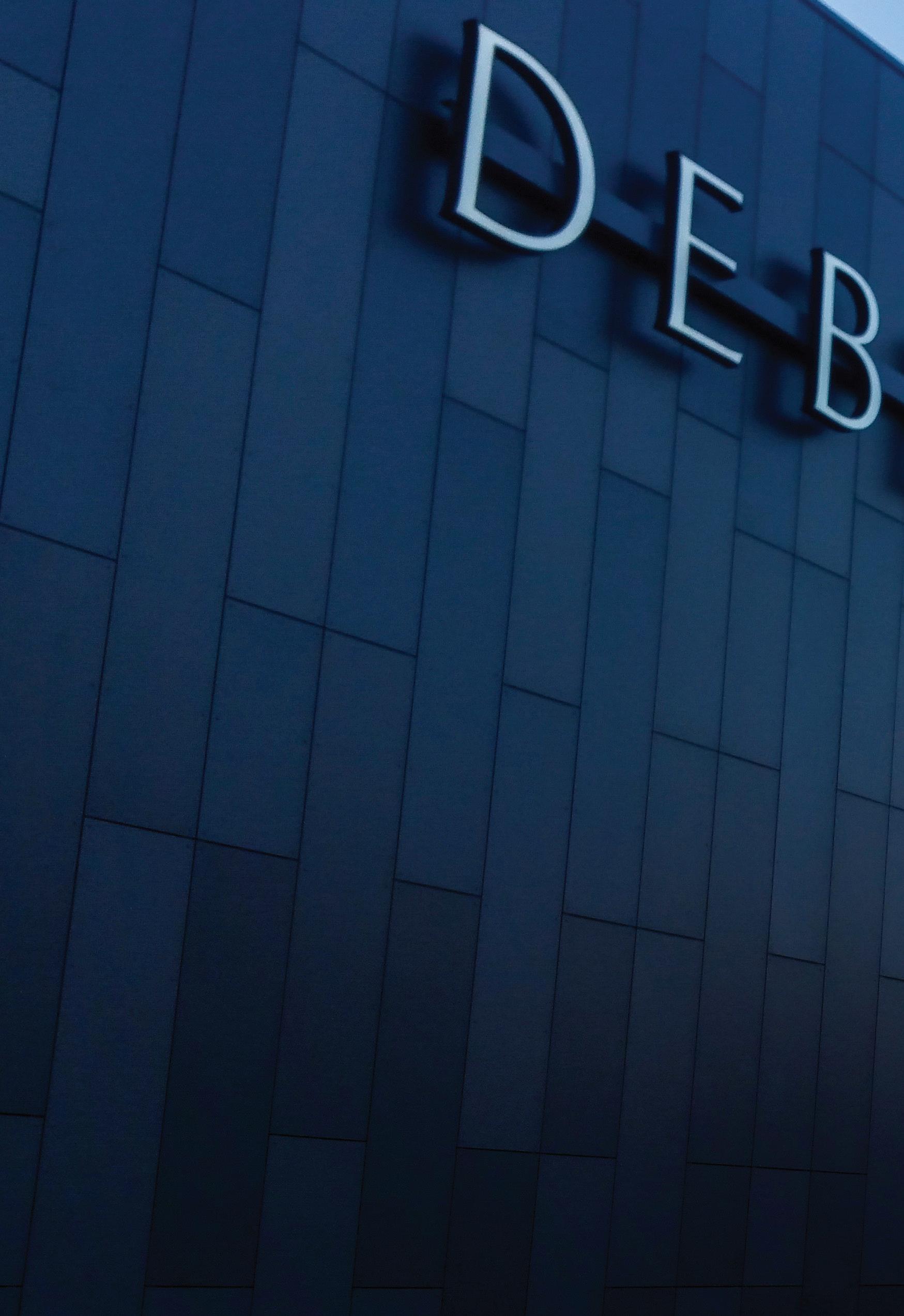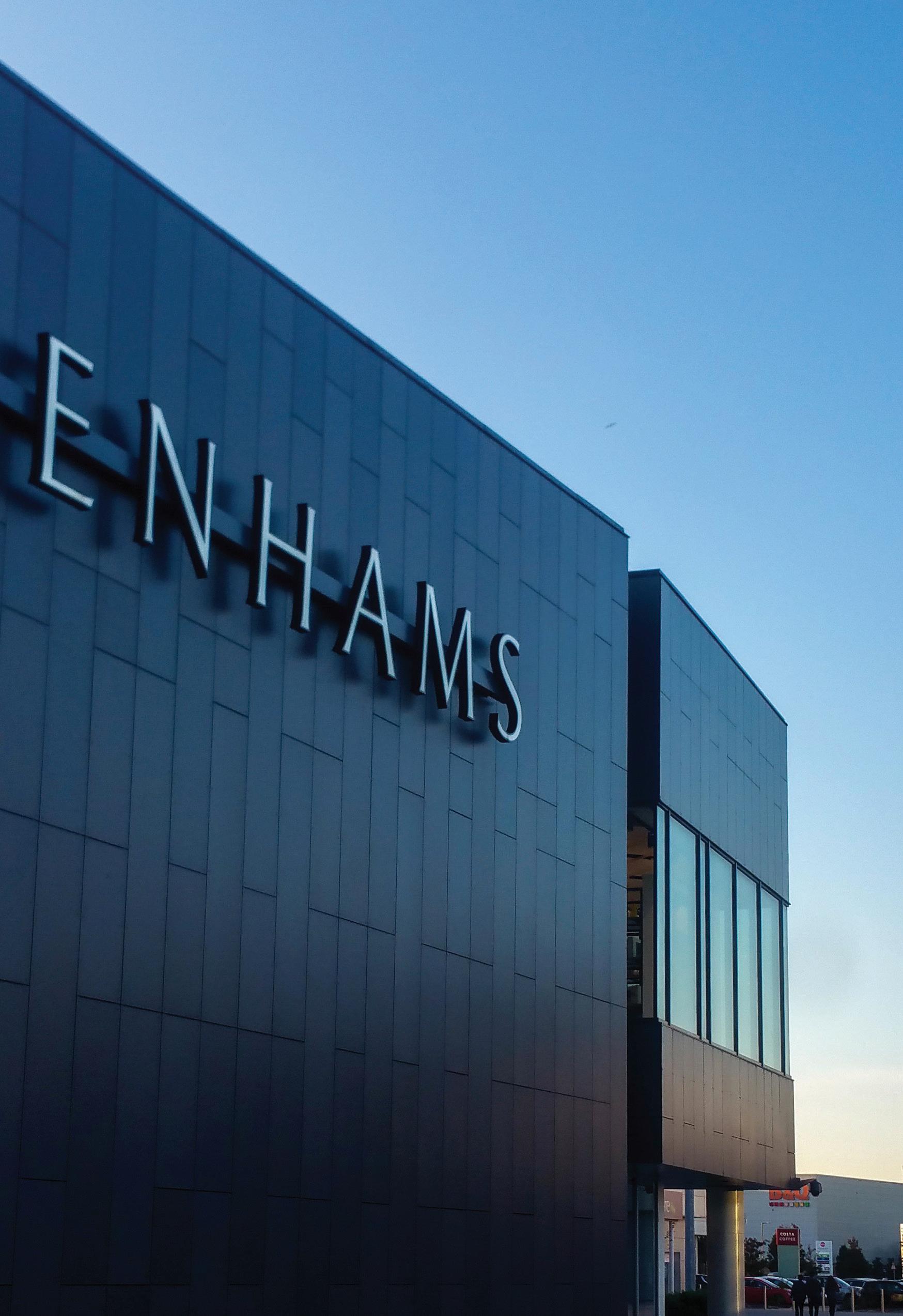
8 minute read
High Street Schools
The evolution of hybrid modeless schools
Professor Stephen Heppell, a global expert in online education and learning spaces, explores the emerging world of new environments for learners.
Just before Christmas 2020, in the UK, the closure of a department store chain that had long been a feature of almost all our large towns’ high streets was announced. Debenhams is not the first victim of the changing world of retailing, but its closing down seemed, for many, like the end of an era. With 12,000 jobs lost, it was the end of a career for many too. We all have childhood memories of department stores, each with much in common: typically, the ground floor housed perfumes and cosmetics with theatrically made-up assistants in white coats. A central escalator linked floors grouped as menswear, toys, electrical goods and so on. Menswear was always upstairs. At Christmas, on the top floor, Santa enjoyed starring in 1,000 selfies while listening to wide-eyed wishes. No doubt there was a whole industry of finessing those unchanging department store details: improving the coffee in the café, and so on. But for those with eyes to see, the writing had been on the wall for department stores for years: shoppers found that the stores indeed had everything, but never quite the right version, or size. It was fun to be in the town centre, but access was a problem for getting purchases home; the many little coffee shops spreading across high streets offered even better coffee; and, anyway, online shopping gets delivered within 24 hours and is more convenient than waiting until the weekend to shop at Debenhams. Which brings us round to schools. A large school arguably parallels the department store in several ways: the one institution has everything, from music and 3D printing to lunch and nativity plays. There is a whole industry of finessed details around behaviour, wellbeing, appearance and more. And “Big School” contains a generation of learners who are asking, as shoppers did with Debenhams, if this is where they want to be at all. Writing this as we approach Christmas 2020, returns show that 22 per cent of secondary students are not currently attending school. The exit has begun.
Autonomous attainment It’s not too late to save schools, of course, and we are entering a millennium of learning, but Covid-19 has shown the viability of alternatives, which we ignore at our peril. Let’s consider what we know about “learning elsewhere”: we have known for a very long time that it
can provide either an effective supplement or substitute. In New Zealand’s Christchurch, after the terrible earthquakes and aftershocks in 2011, children were out of school for terms, not weeks. Student results actually went up in their final exams and high school students did not drop out. In ten years of the DfE-supported Notschool.net, a 100 per cent online project for the many thousands of children excluded from school by behaviour or circumstances, it was normal for those excluded students to outperform the schools that they had been excluded from. Around 70 per cent went on from Notschool.net to college or university, and indeed we had to set up unique degree pathways so that their successful learning model could continue to degree level and beyond. Notschool.net began in 1997; what we learned then still holds true today. During the Covid-19 pandemic, the schools who had already embraced significant degrees of student autonomy – with carouselled activities, a project-based overarching learning focus, peer-to-peer mentoring and support (including some all-age learning), learning pathways rather than rigid timetables and with


high levels of student agency – stepped into the new world of online lockdown with aplomb and met with success. Sadly, but predictably, where a Zoom-based analogue of the traditional school day and timetable, was attempted, children quickly fed back the equity problems (“My brother is online then, and my mum needs to be too, for her work in the afternoons”) alongside the sense of missed opportunity (“I wish I could show you what I’ve been learning with my pals – we’ve really got into space science!”) – and, indeed, they mentioned boredom too (“I’m Zoomed out Miss”). Successful Covid-19-era schools have, by and large, blended their face-to-face with their from-home learning. Teachers have been SO ingenious and resilient.
A modeless future? Much is made of the blended, or hybrid, school, offering a mix of online with face-to-face learning. For teachers this two-mode model has been exhausting! However, very few companies outside of the education sector operate with two modes, with distinct online and also face-to-face teams. Those modeless companies are normal, with employees sometimes beaming in remotely, sometimes in the office physically, but always part of a unified professional team, working at common projects. This modeless future is surely where surviving schools are headed and it is a design challenge to make our learners feel “part of the team” at all times. You will recall the rejection of mass hot-desking in office buildings – with the loss of agency and mutuality felt by office workers? Well, the many adults now working from home (WFH) will certainly not all be returning to the anonymity of hot-desking any time soon. They have enjoyed working from home, and that has profound implications for commercial real estate. But WFH has unlocked the door to childcare changes, too. Children don’t need to be sent away to be looked after daily – they can now stay home safely, which has the same profound implications for educational property. Of course, most parents don’t want to be the teacher, by and large, but they are happy to oversee small clusters of learners. Around the world these “pandemic pods”, with a paid private tutor overseeing small clusters of children, and Zutors (Zoomed-in tutors) have shown explosive growth. The 2020 Facebook Pandemic Pods group grew to 30,000 registrations in its first three weeks! These pods for wealthier families are an existential threat to private schools, which as yet don’t see either the danger or the opportunities.
Some months back, we asked online groups of schoolchildren, returning from lockdown, about which aspects of home learning they would miss and similarly which dimensions of face-to-face learning they looked forward to rediscovering. As part of the conversation we asked how many days a week they would need to attend school physically, to “still feel a part of the community” and still “keep a bond with their besties”. Their average response was two days a week. Everyone reading this can do the simple maths: if children attend perhaps only two or three days a week, then we have considerable excess capacity in our large school buildings.
Making places our spaces What does all that mean for school design and for our learning spaces? Well perhaps there is a clue to be found in what happened to the retail industry (although, of course, learning is far more complex than retail). Before the millennium my team worked with Tesco, Intuitive Media and others to create Tesco SchoolNet 2000. It became a Guinness World Record holder as the then biggest internet learning project in the world. We set children of all ages a string of online challenges: “Locate the oldest person in your community and find out about their school days.” Tesco saw very smart collaborators; they saw the levels of engagement and immediately understood the implications for online activity (sadly, our own English Department for Education and Skills didn’t). With that head start Tesco has gone on to be far and away the UK’s dominant online supermarket chain.
When Covid-19 hit, Tesco was, just like the successful schools, already on a path that made a substantial further expansion of online, easy. Tesco increased online weekly orders from 600,000 to 1.3 million, in less than a year. While many Tesco shoppers rushed online, the places where they still enjoyed shopping face to face were often now the small local “express” branches, right in the heart of the community. The land banks for planned new superstore sites were sold, as the growth in big superstores gave way to an explosion of tiny local stores. It is what people want, to complement their online shopping. When we were exploring with groups of children, in Scotland’s Dumfries and Galloway, where they wanted their new maker space to be, the children were unequivocal: “In the heart of the high street please.” We took over an empty high street shop. It was what the children wanted to complement their online maker communities – and it gave access to new adult learners. Once it was open, mums peered through the windows to ask about 3D printing and more. Working with an elite sport (which I won’t name), it was apparent that its leading athletes didn’t feel membership of their huge training premises. Photos on the walls were of past champions; the design was corporate; they felt like users rather than owners of the space. It now has photos of the athletes’ children, or themselves as youngsters. It feels like their space; they want to be there. I’ve been in too many schools where that same alienation applies, right down to the boundary razor wire and signs telling you what you must not do. If we want children to keep coming to school, now that they have choices, it needs to feel like “their” school and that is a simple design challenge. We know how to do all this: co-design, student agency, ever-changing premises, agile furniture, adaptable spaces, small scale, multiple locations. And surely we can be smarter than Debenhams before it’s too late?
Professor Stephen Heppell is CEO of Heppell.net and holds the Felipe Segovia Chair of Learning Innovation at Universidad Camilo José Cela, Madrid.









